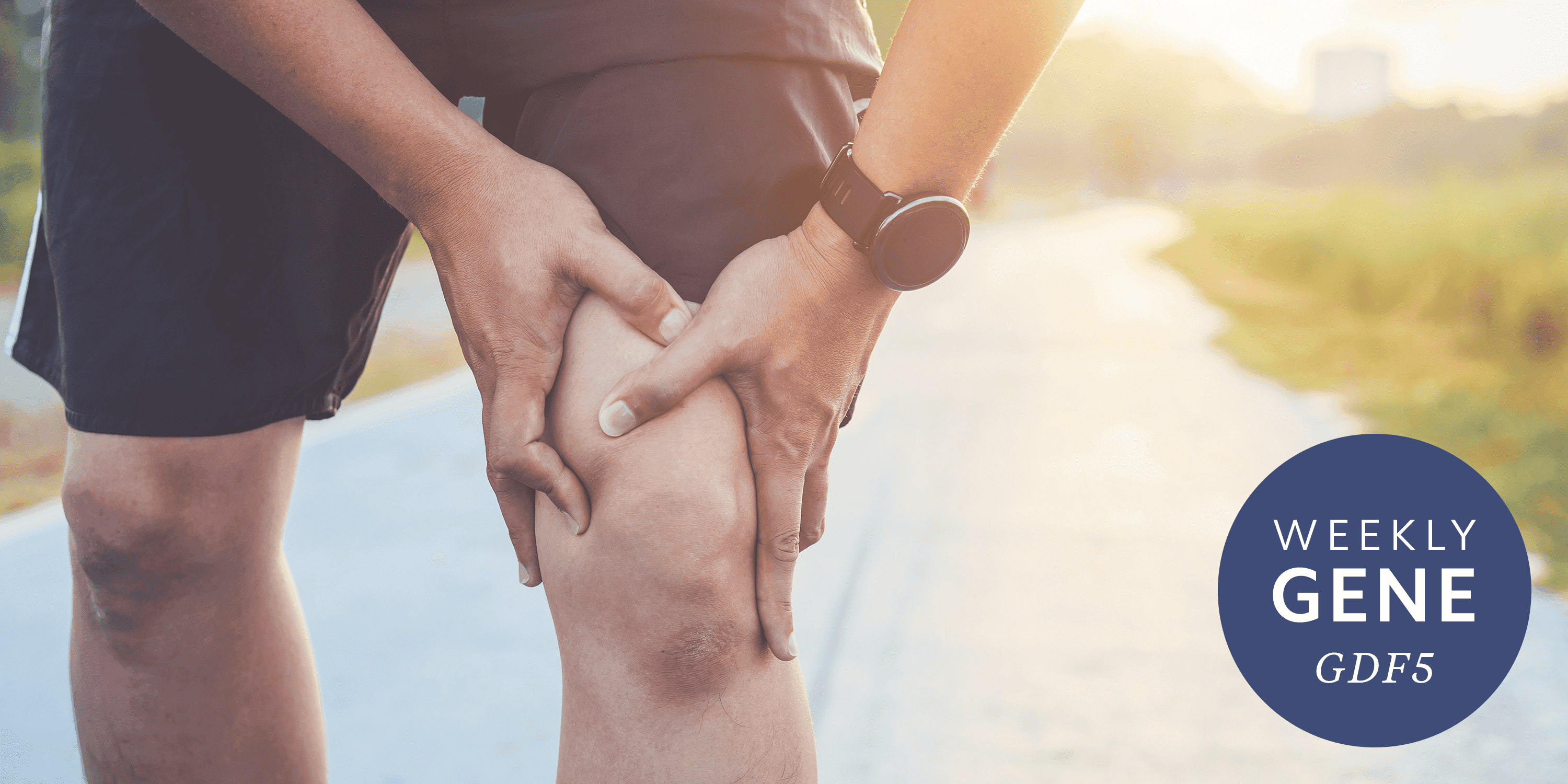Could DNA affect the feeling of stiffness in our hands and knees?

As adults, we often forget that our bodies are active construction sites. It makes sense when we’re kids—building bones and cartilage is all part of growing up. But when we’re adults, our bodies have to continually repair the usual wear and tear of everyday life. One place where this is particularly true is in our joints. As our limbs bend and twist, bones slide smoothly past one another thanks to a slick layer of cartilage between them. If that layer isn’t maintained, our bones will grind against one another (painfully). To help prevent this, our body employs the GDF5 gene.
Growth differentiation factor-5 (GDF5) is a gene that tells our body how to make the GDF5 protein (it’s common in genetics to give the same name to both a gene and the protein it codes for). This protein is used to help cells communicate with one another. More specifically, its been shown that GDF5 has an important role to play in orchestrating the formation of cartilage and joints during embryonic development1.
The GDF5 protein has a domino effect
Before our limbs have fully formed, cells positioned where our joints will eventually grow begin to produce the GDF5 protein. As it’s released from these cells, the GDF5 protein has a domino effect on the surrounding cells that tells them to become cartilage (rather than bone). Eventually, cells in this part of the embryo form a joint—complete with cartilage and special fluids that prevent bone-on-bone contact1.
But over time, the cartilage in our joints can take a beating. Gaining weight, exercising, sustaining injuries, and other routine aspects of life can all cause varying amounts of damage to the cartilage in our joints. But, just as in development, the GDF5 gene helps make more. Multiple lines of evidence suggest that production of the GDF5 protein in our joints helps our body repair, or replace, damaged cartilage1-5.
With such an important role in producing and maintaining the integrity of our joints, it’s not surprising that changes in the GDF5 gene have been associated with changes in the durability of our joints.
As we age, the tissue in our joints suffers some natural wear and tear. Typically, our bodies can repair this damage, but researchers have found that some people can’t repair small damages in cartilage at a fast enough pace, ultimately resulting in decreased durability of the joint4. Factors like a person’s age, sex, weight, and previous injuries can all affect this as well. Aside from these environmental factors, studies have shown that some people inherit a specific version of the GDF5 gene which may affect their joint durability4.
Scientists have found that a change in the GDF5 DNA sequence can reduce how much of the GDF5 protein is made under laboratory conditions5. This same variant has been found more frequently in people with joint pain and stiffness than in people without it—leading researchers to believe that it may increase a person’s odds of experiencing these symptoms.
While more research is needed to fully understand how changes in the DNA coding for GDF5 influence joint stiffness, these early insights offer researchers a new path forward.
- Edwards, Christopher J., and Philippa H. Francis-West. “Bone Morphogenetic Proteins in the Development and Healing of Synovial Joints.” Seminars in Arthritis and Rheumatism, vol. 31, no. 1, 2001, pp. 33–42., doi:10.1053/sarh.2001.24875.
- Miyamoto, Yoshinari, et al. “A Functional Polymorphism in the 5′ UTR of GDF5 Is Associated with Susceptibility to Osteoarthritis.” Nature Genetics, vol. 39, no. 4, 2007, pp. 529–533., doi:10.1038/2005.
- Valdes, Ana M et al. “The GDF5 rs143383 Polymorphism Is Associated with Osteoarthritis of the Knee with Genome-Wide Statistical Significance.” Annals of the rheumatic diseases 70.5 (2011): 873–875. PMC. Web. 10 Oct. 2018.
- Chen, Di et al. “Osteoarthritis: Toward a Comprehensive Understanding of Pathological Mechanism.” Bone Research 5 (2017): 16044–. PMC. Web. 10 Oct. 2018.
- Egli, R.j., et al. “Functional Analysis Of The Growth And Differentiation Factor 5 Regulatory Polymorphism That Is Associated With Osteoarthritis Susceptibility.” Osteoarthritis and Cartilage, vol. 17, 2009, doi:10.1016/s1063-4584(09)60399-x.